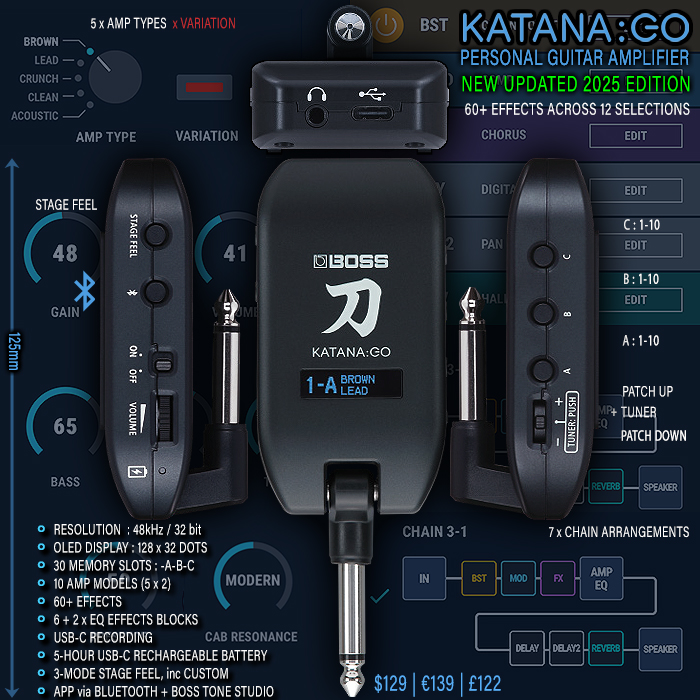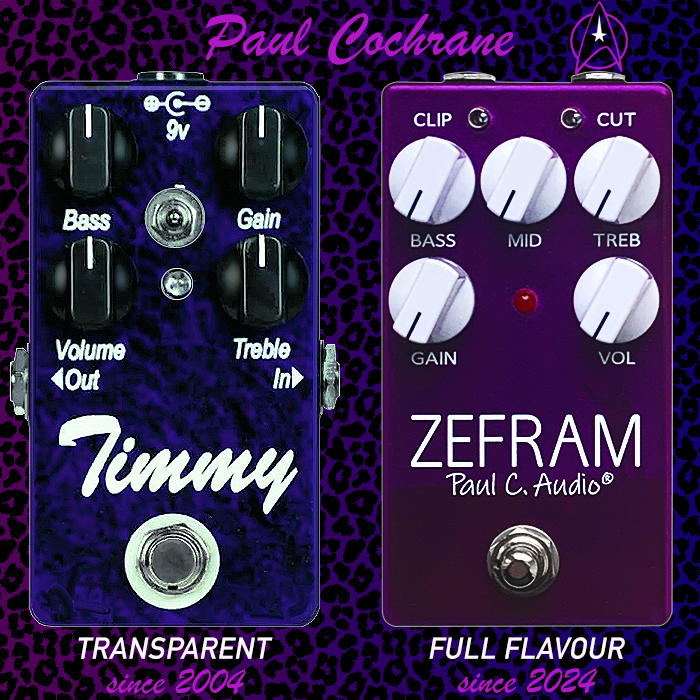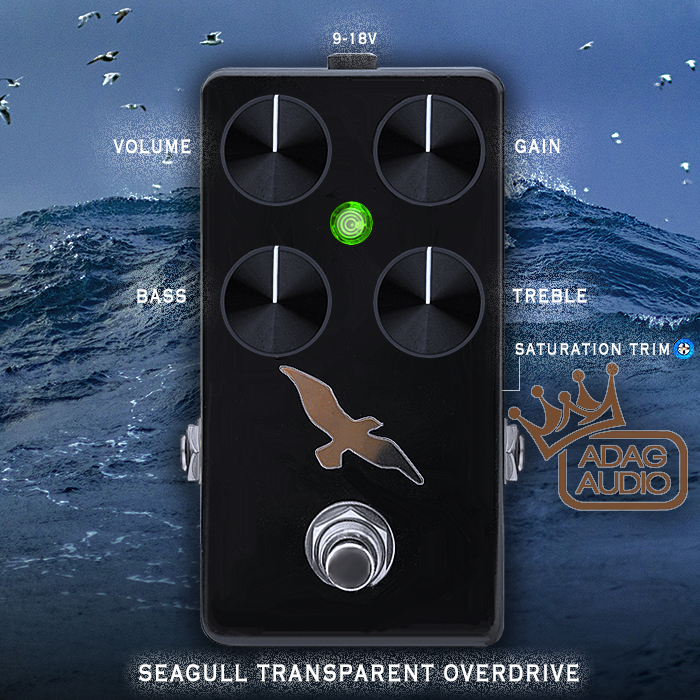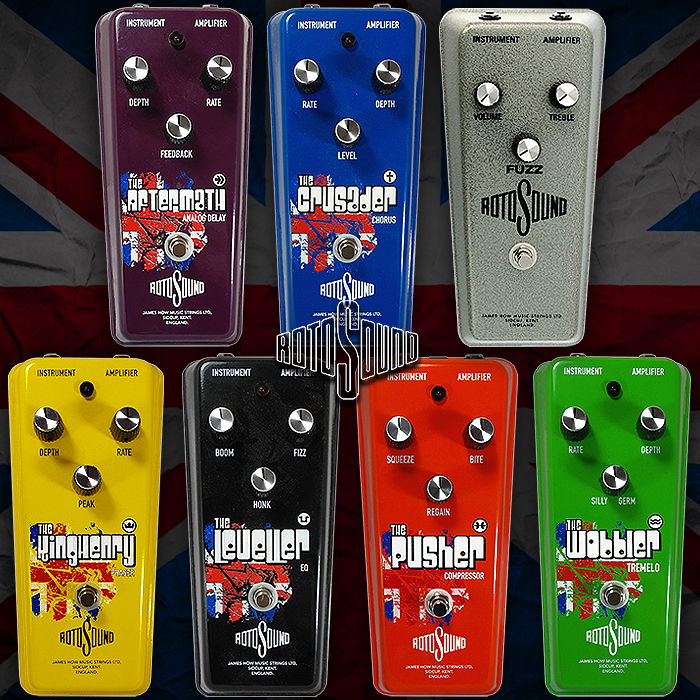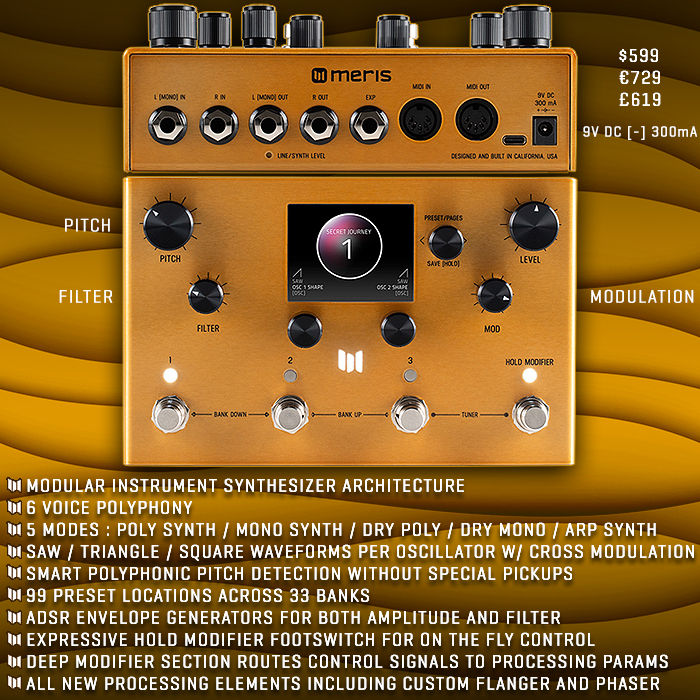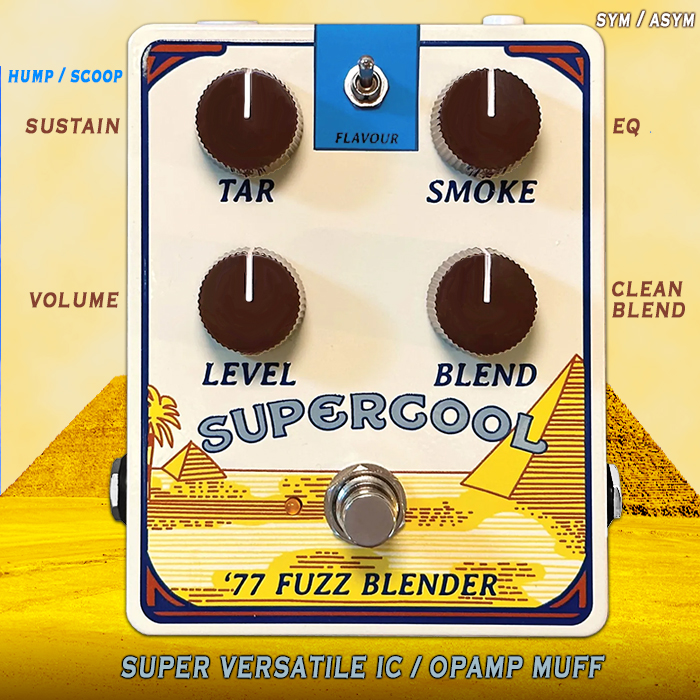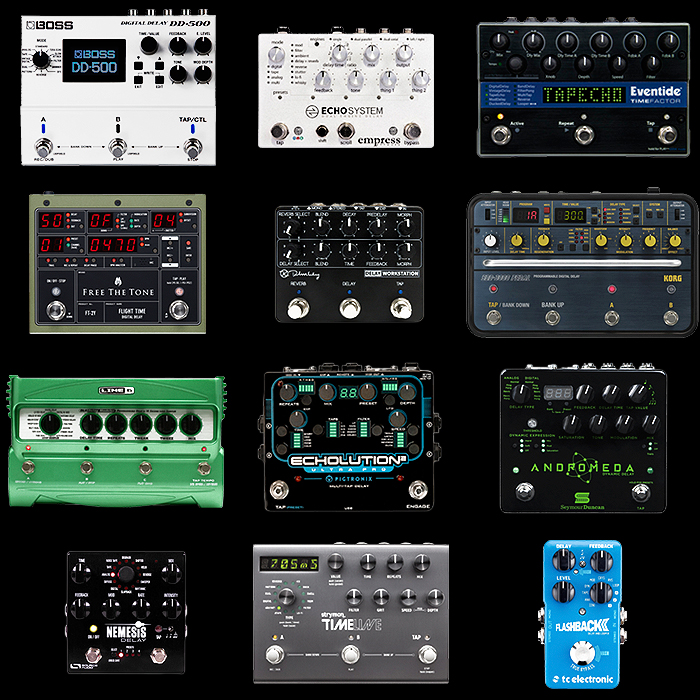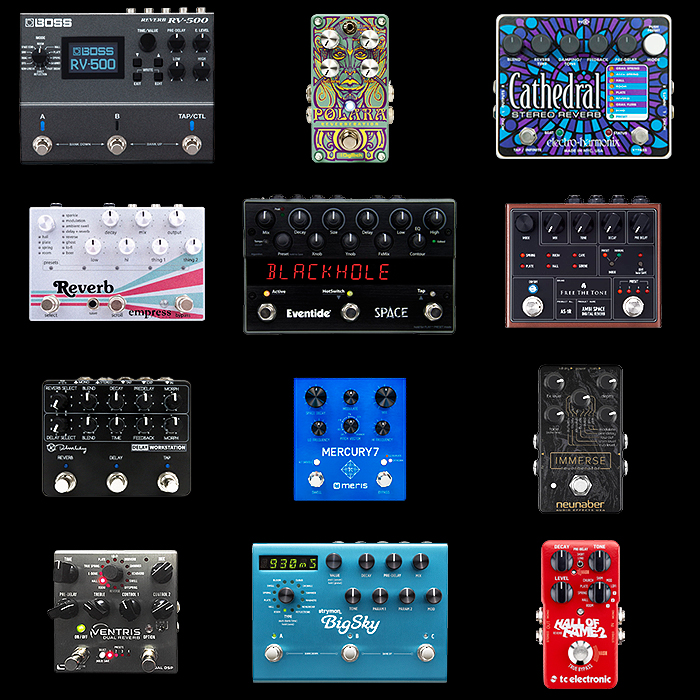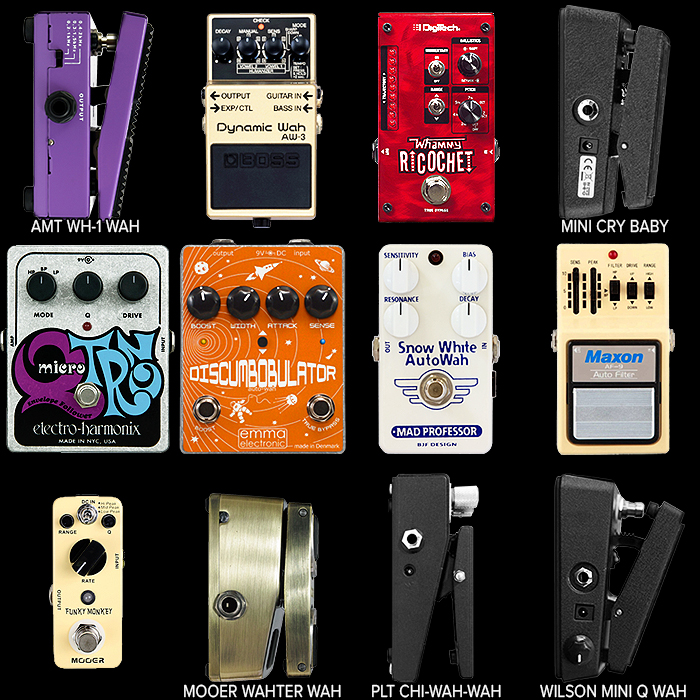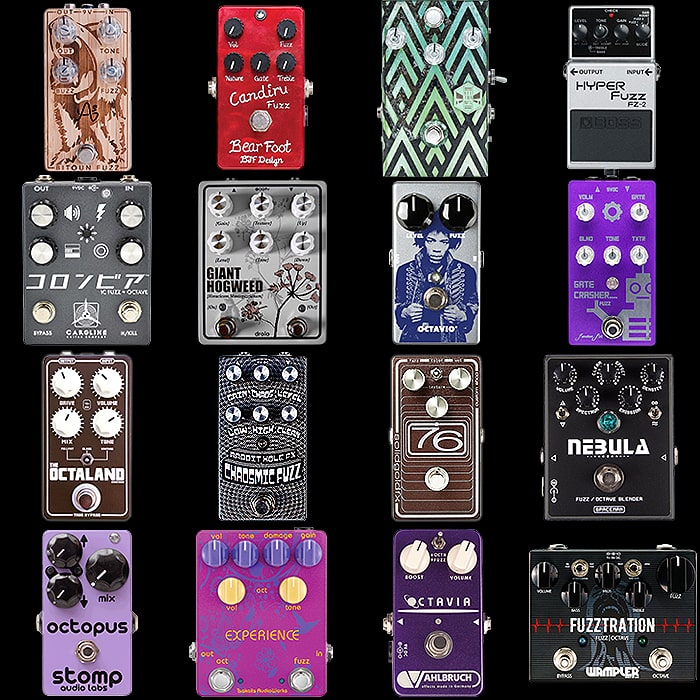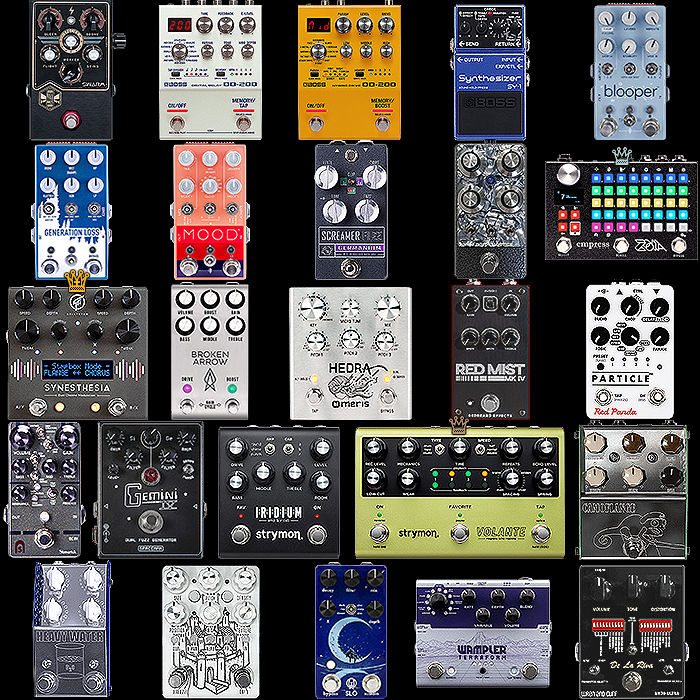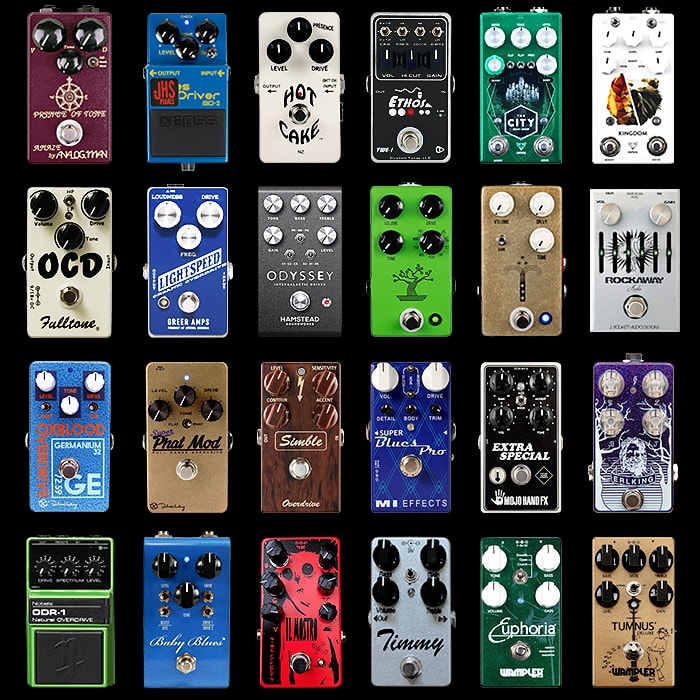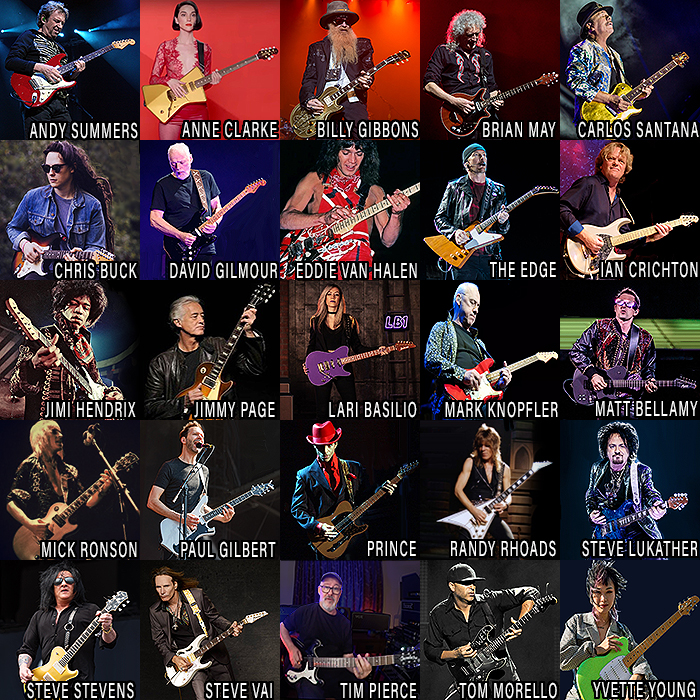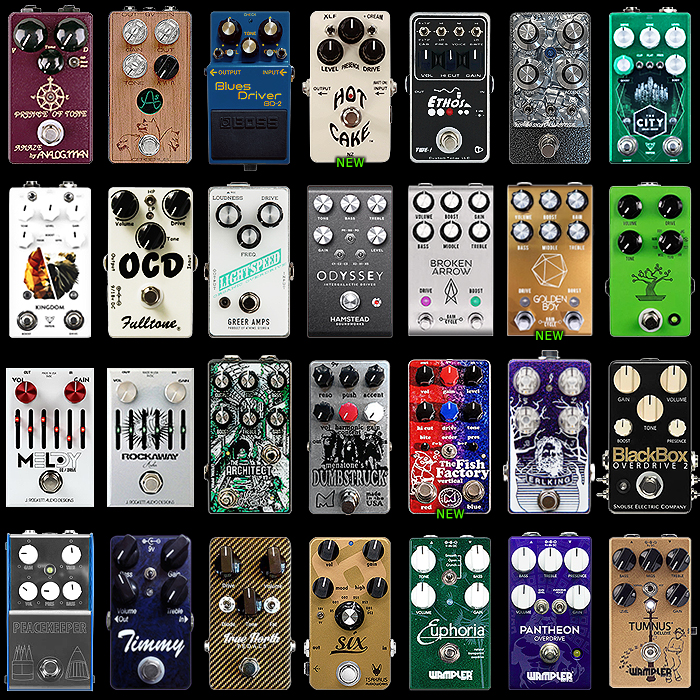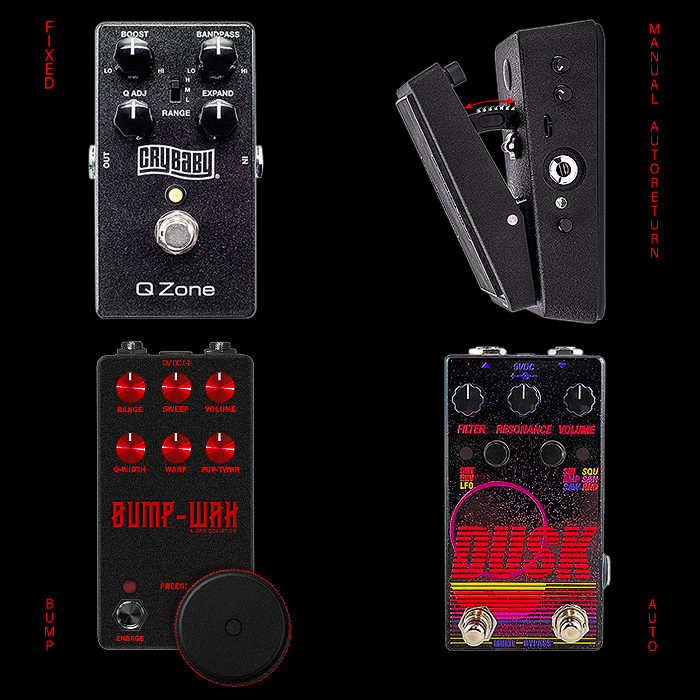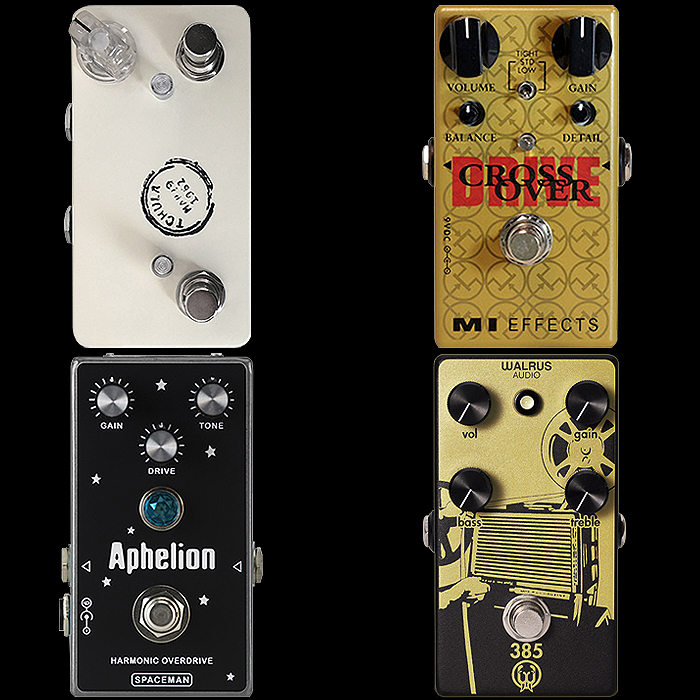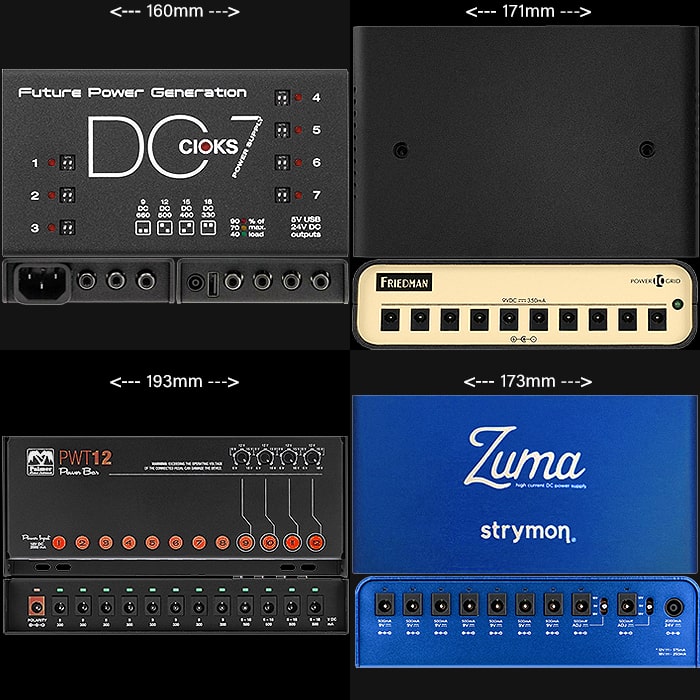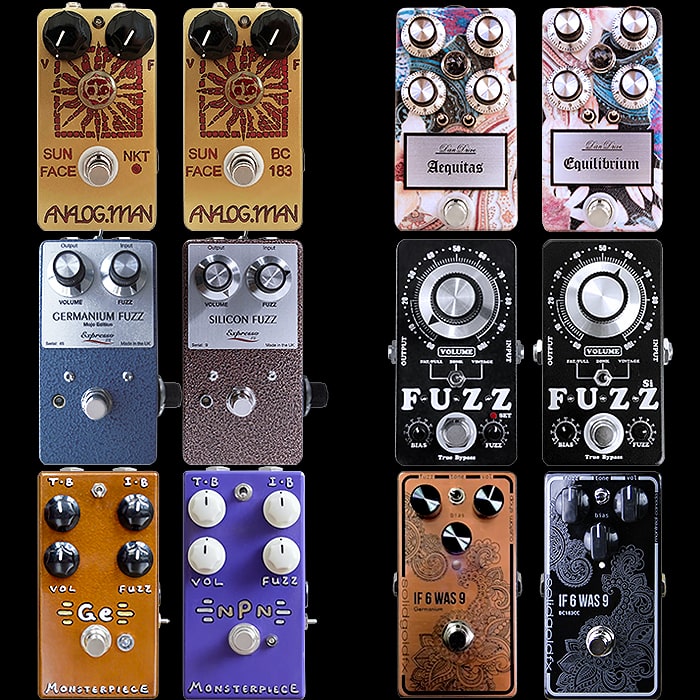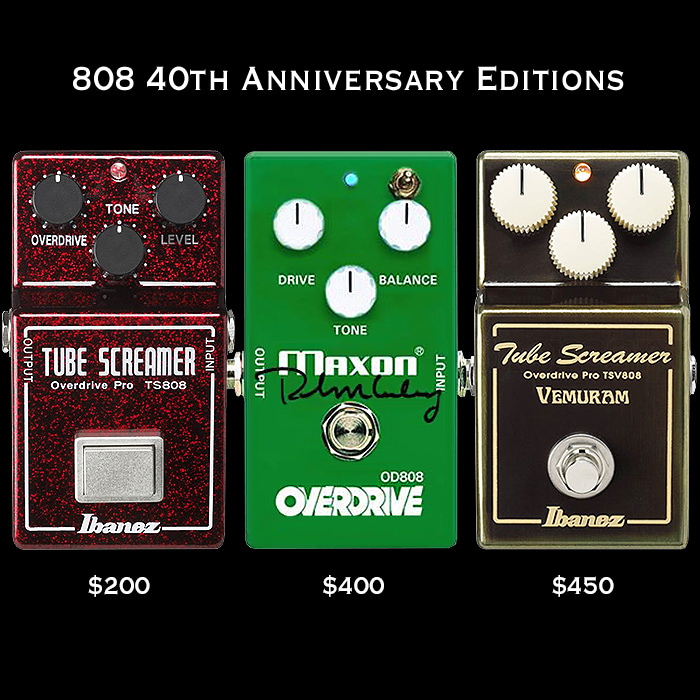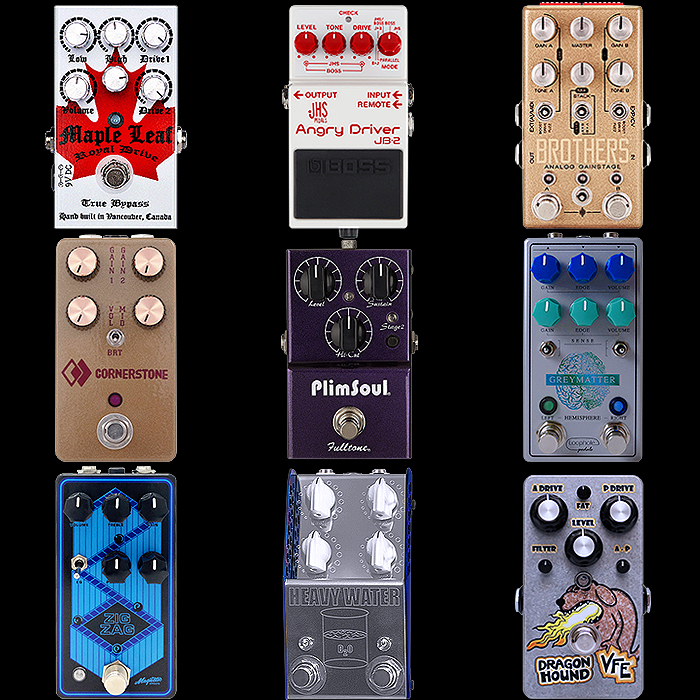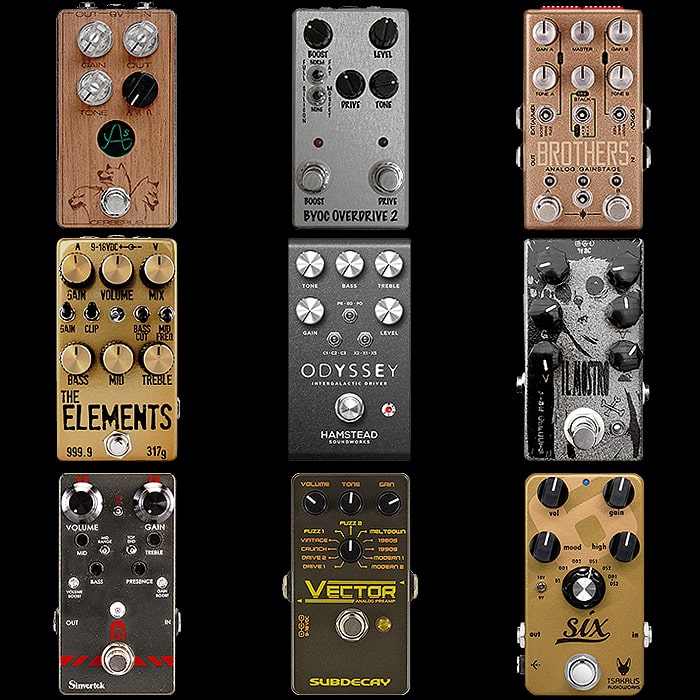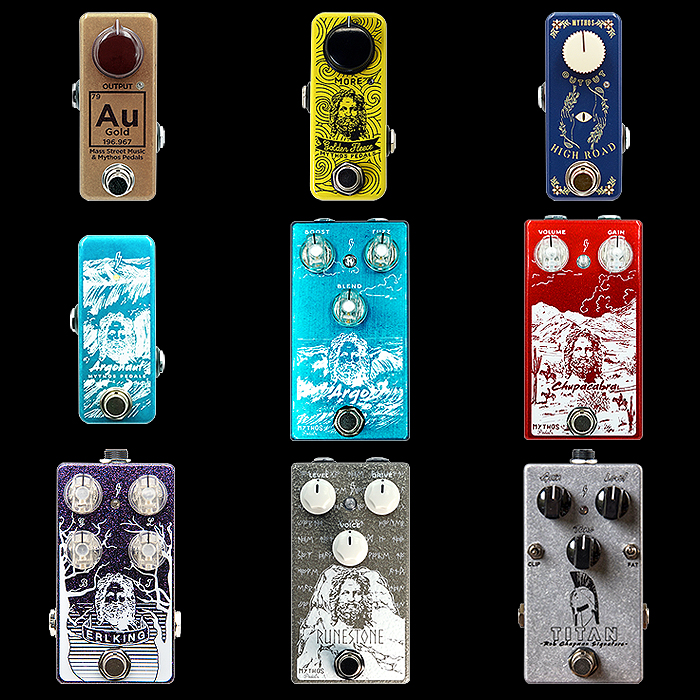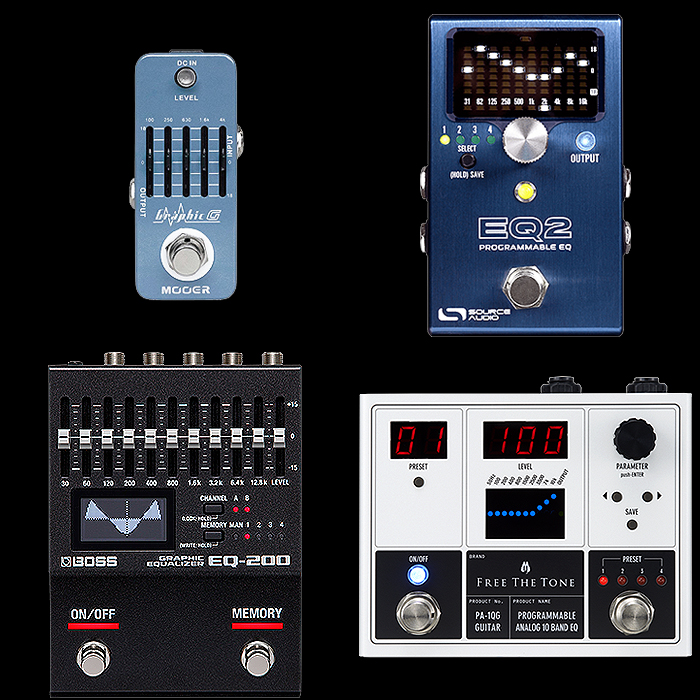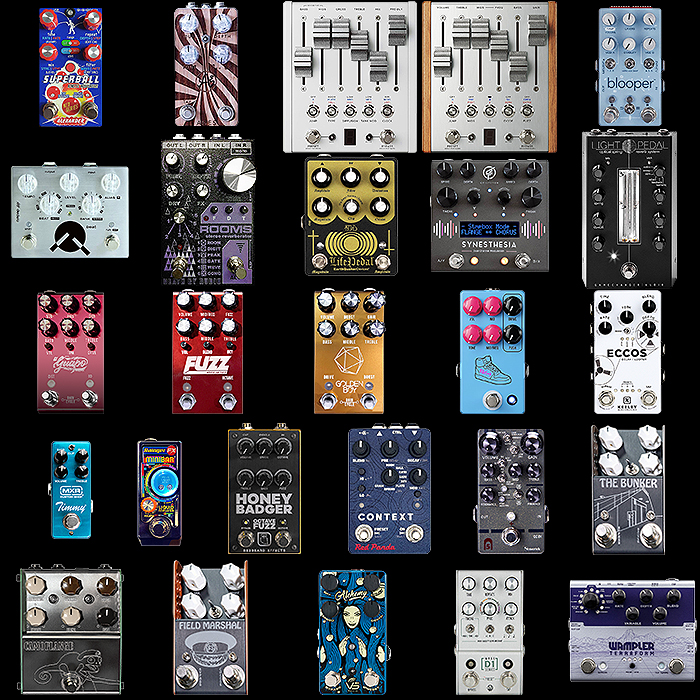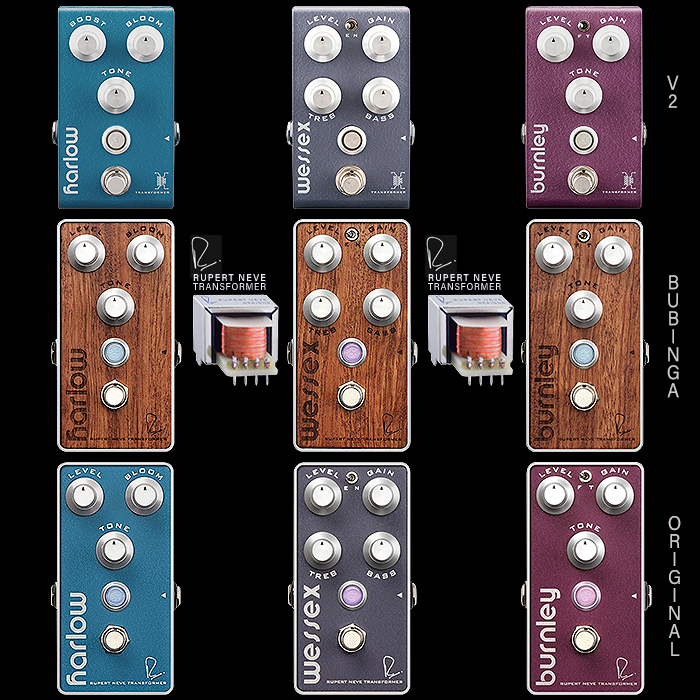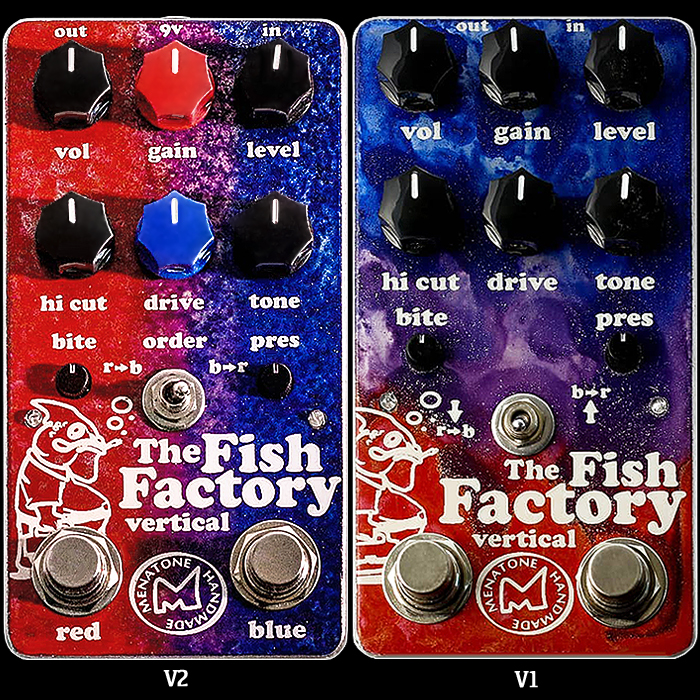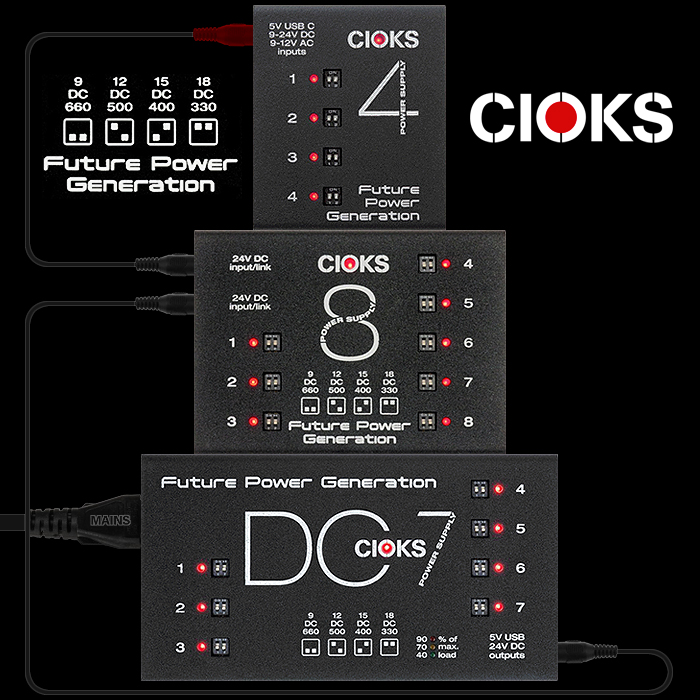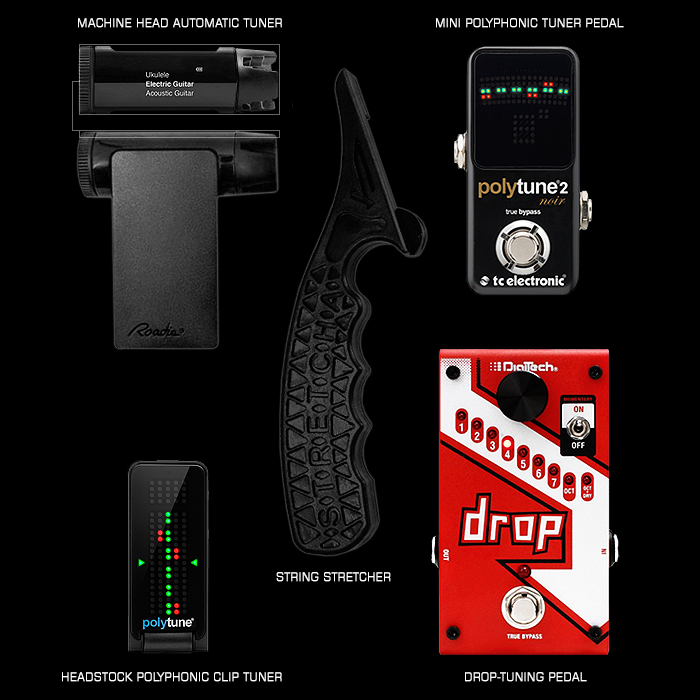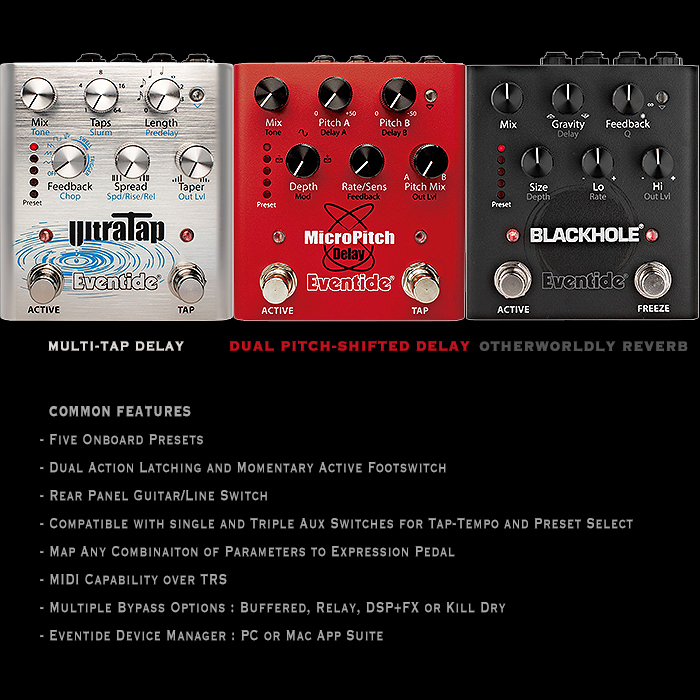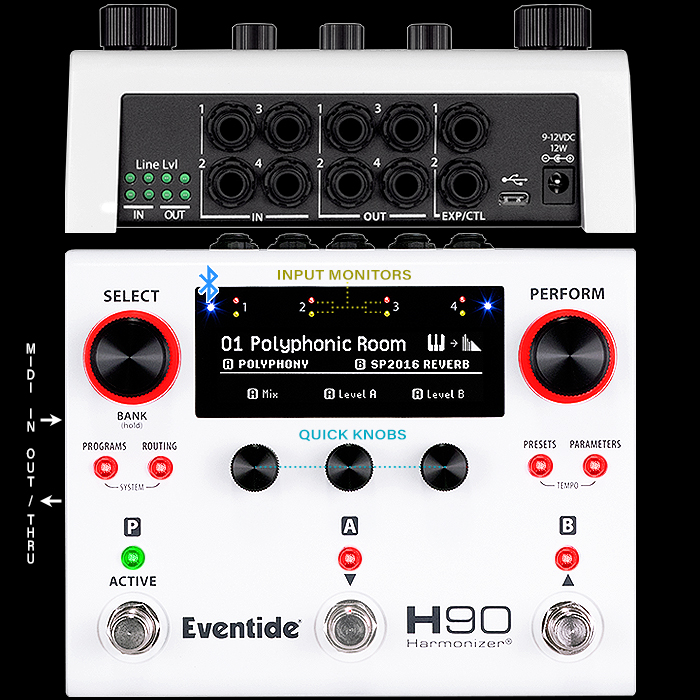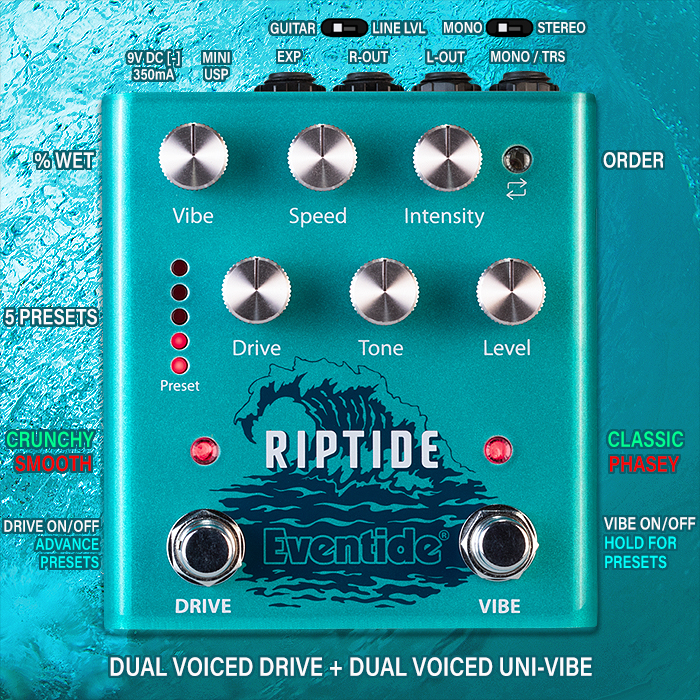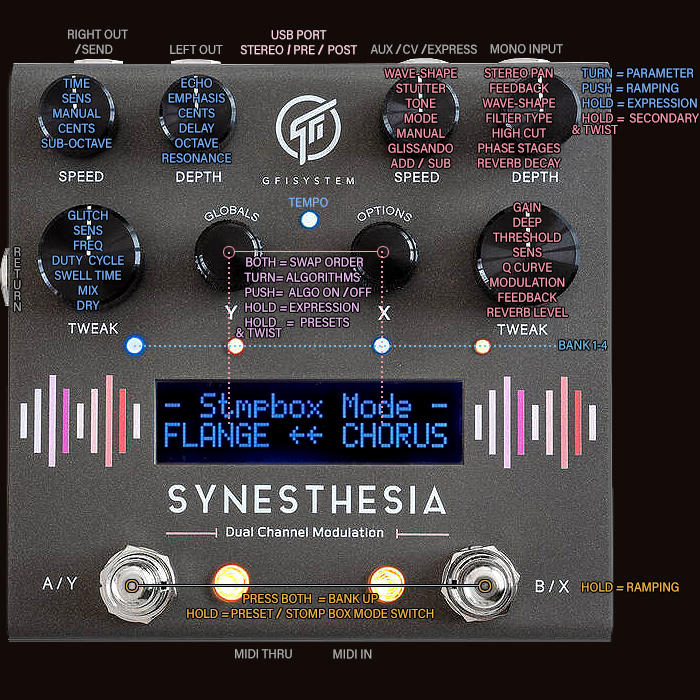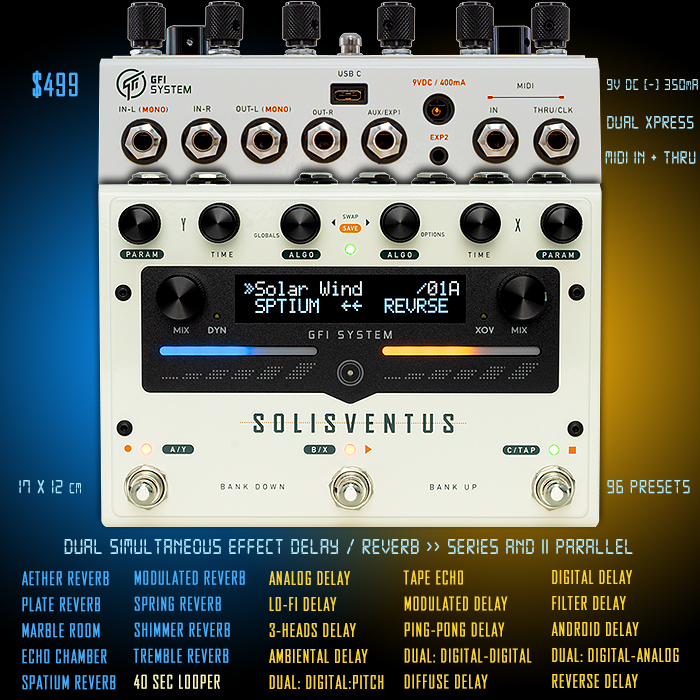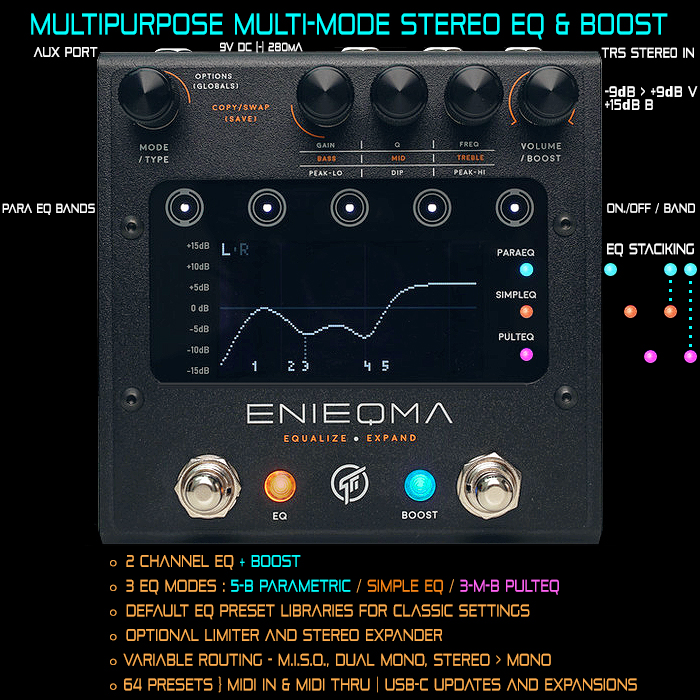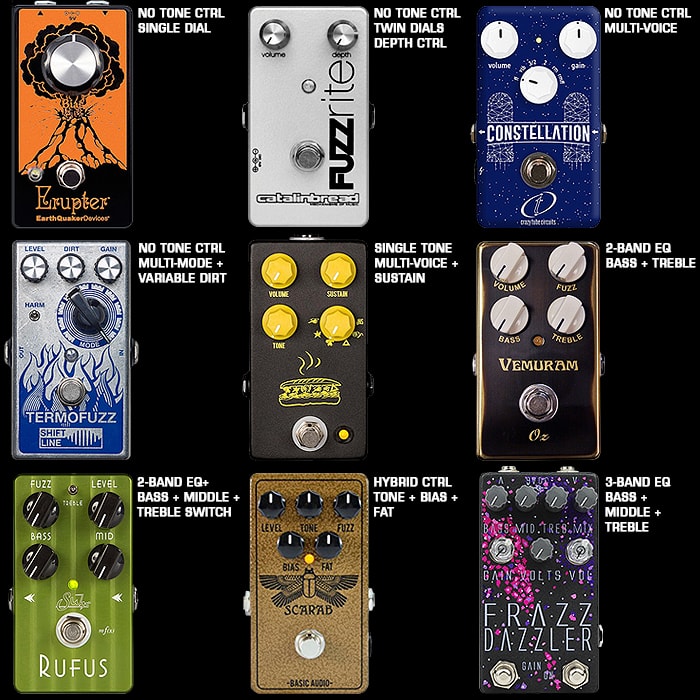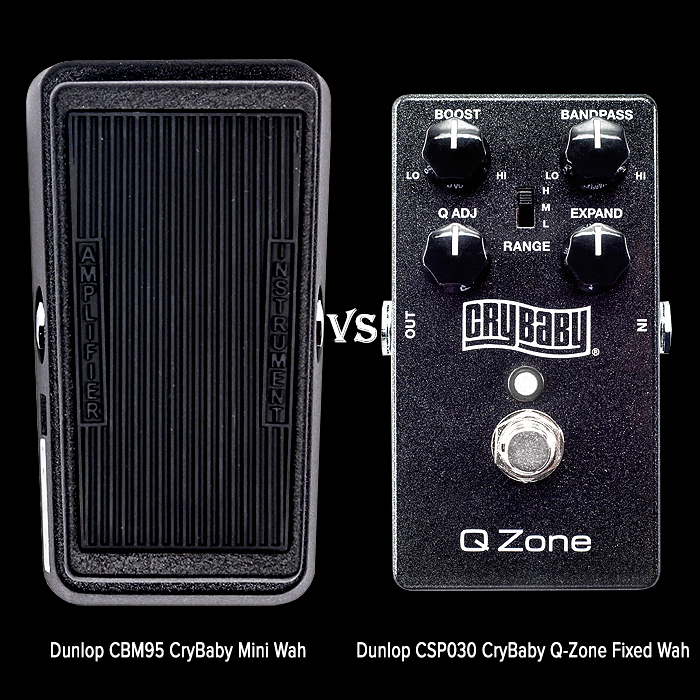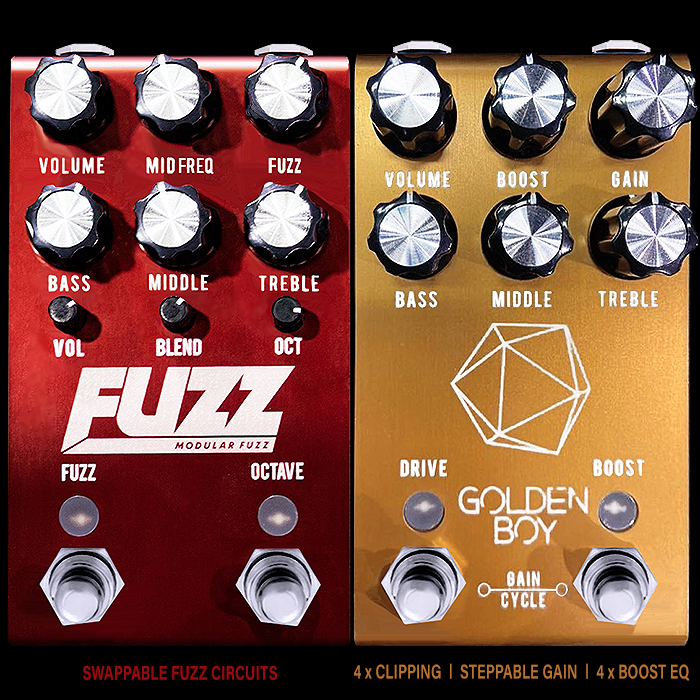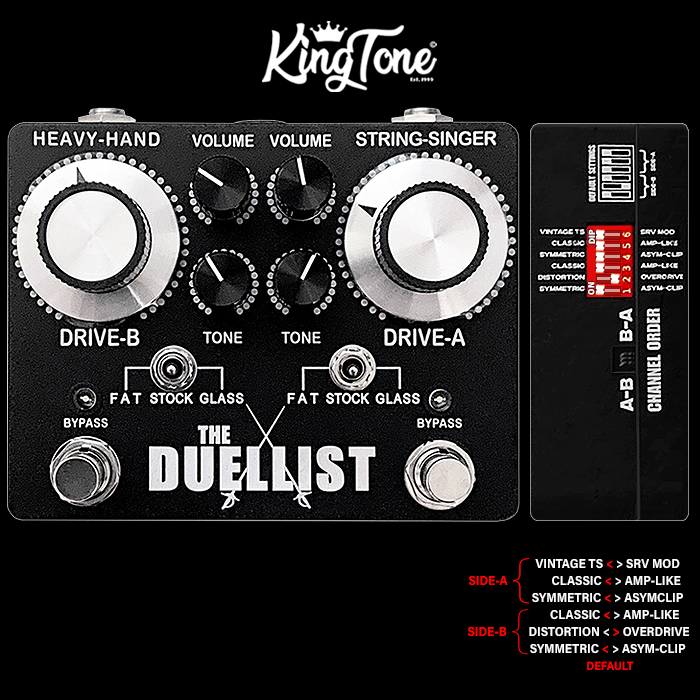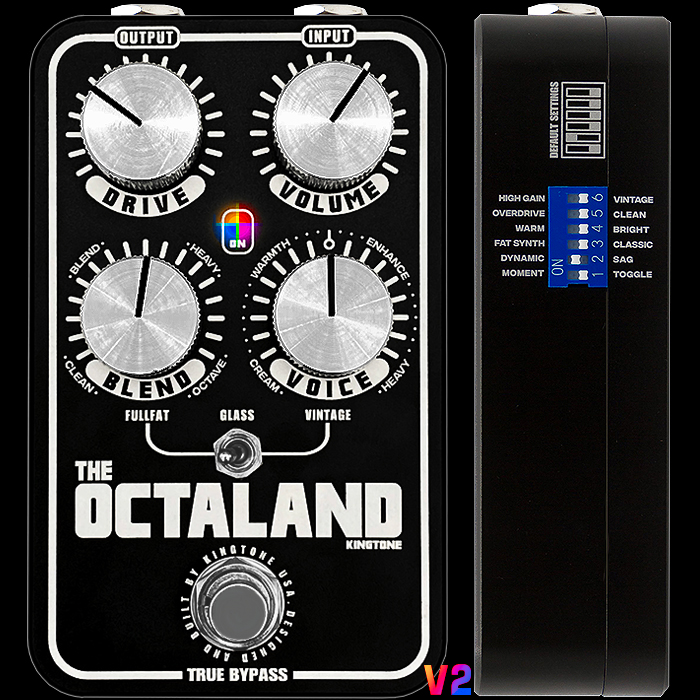Josh Smith's Pedalboard Dynamics and Essential Tone Components
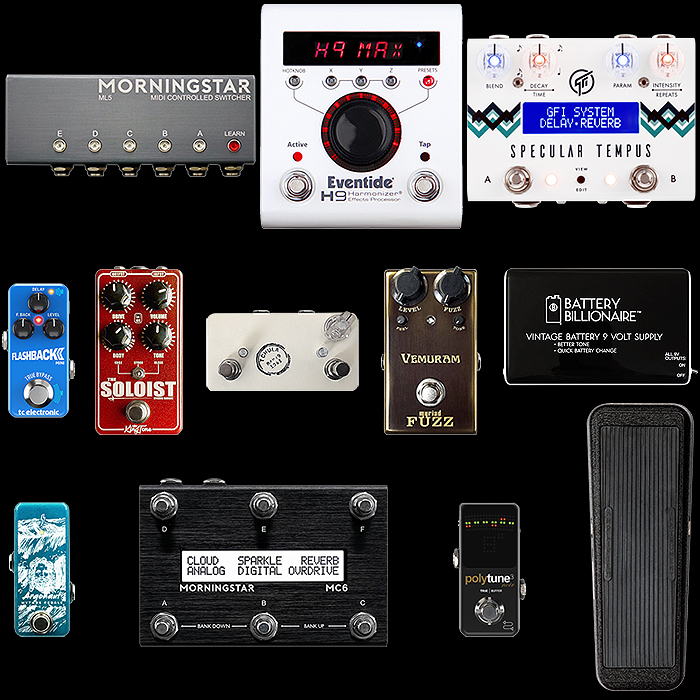
So I seem to have fallen into something of a Josh Smith ToneQuest phase of late. I’ve always been a fan of his core signature tone/s while not necessarily the biggest fan of his musical output per se. His first influence on me was his signature Eventide H9 Rotary preset - which settings I share in this post. I have somewhat fallen into using my own H9 mostly in Josh’s Rotary mode - with a few choice reverbs and delays too, but modulations generally coming from other parts of my pedal-chain.
We of course can’t get away from mentioning Josh’s signature pedals - in particular his Lovepedal Tchula Overdrive, but also the recent Venuram Myriad Fuzz, and forthcoming King Tone Sololoist Overdrive (String Singer side of Duellist). For 90% of the time Josh has the Tchula on as his core sound, but he augments that with his Fuzz and recent Overdrive addition, and in combination with the Mythos Argonaut Mini - a sort of Dan Armstrong Green Ringer style Octave effect.
Next we have two delays - Josh uses his signature TonePrint preset on the TC Electronic Flashback 2 Mini for a short / slapback style delay, and the MultiTap Multi-Tape-Head modes on the GFI System Specular Tempus for his long Echorec style delay. The last in line is the Eventide H9 as mentioned - which is mostly used for Josh’s Rotary Vibrotone preset - as pictured below.
All the pedals are organised via the Morningstar ML5 5-Loop Midi-Controlled Switcher at the back of the board, which is in turn marshalled by the Morningstar MC6 Midi Controller at the front - which allows rapid access to six patches in its simplest configuration - and up to 30 banks if you need them! Power is provided by the pictured Danelectro Battery Billionaire 4 x 9V PP3 battery supply, alongside a couple of other unspecified and concealed power-supplies - you can see the main one’s outlets emanating from beneath the Morningstar MC6 in the below video, there is also something underneath the TC Electronic Polytune Mini and to the right hand side of the Morningstar ML5, while I would personally likely just settle for a Cioks DC7, which alongside the Battery Billionaire could provided isolated supply to every pedal. All those pedals sit inside a beautifully appointed Schmidt Array SA250 Pedalboard, while the mostly used CryBaby Clyde McCoy Wah sits outside.
I will provide a few more details on each of the key components below :
Dunlop CM95 Clyde McCoy Cry Baby Wah - $199
Josh describes this as getting his funk on in a sort of Isaac Hayes 'Shaft' style - which this pedal does particularly perfectly. I personally have kind of moved on from full-size wahs, having picked up a CryBaby Mini, CryBaby Mini 535Q, and CryBaby Q-Zone Fixed Wah along the way - I even considered acquiring the Hendrix JHM9 CryBaby Mini Wah also along the way but that never happened. In fact instead I've moved onto more envelope filters and auto-wahs - currently the Mu-Tron Micro-Tron III, but will be checking out the new Dr Scientist Dusk at some stage in the near-ish future.
TC Electronic PolyTune 3 Mini Noir Tuner - £65
I love TC Electronic's Mini PolyTune tuners, and had one of the series 2 at the start of my chain for the longest time. Interesting to see that Josh used to have a regular size Sonic Research ST-300 Turbo Tuner, but then moved onto the PolyTune Mini rather than the ST-300 Mini. For me there's only 4 brands I would really consider for tuners, probably the best of the bunch in terms of accuracy is the newest Peterson StroboStomp Tuner, but I also rate the Boss TU-3, the Sonic Research Turbo Tuner pair, and TC Electronic's PolyTune range. I myself have moved onto the Roadie Audtomatic Tuning-Peg Tuner - which I just find the quickest and most elegant means of a tune-up. I also don't really want to sacrifice a pedal-slot to a tuner, but otherwise I would likely still have one of the two mini variants in the chain.
Morningstar MC6 MKII Midi Controller - $229 (Bundle with ML5 $408)
There's lots of people that rave about the Morningstar devices - including my friend Adrian Thorpe who likes them so much that he sells them on his ThorpyFX website/store too. For me the king of Midi Controllers will always be Dan Steinhardt's TheGigRig G2, the best of the simplest compact ones is the Selah Effects Quartz, while the one that provides the best marriage of full-featured and relatively compact size has to be the MC6. Because of the dynamics of my own 40 strong pedal-chain - it does not make sense to be using any kind of midi-controller as things chop and change far too frequently. Were I to go down the midi route though - I would probably select the MC6 as my starting point as it has the best combination of form-factor and features, and is also very fairly priced. I would of course too use it in conjunction with the Morningstar ML5 Looper/Switcher as Josh does here. Once I was fully acclimatised to midi, I would consider upgrading at a later stage to TheGigRig's G2.
Mythos Argnonaut Mini Octave (Green Ringer) - $119
I will admit I was a little late to the party on Zach Broyles' Argo (COB) and Argonaut pedals. At one stage I had decided I really just needed / wanted the former, but based on witnessing what Josh Smith does with his Argonaut I obviously need both. The larger version is based on the Prescription Electronics Clean Octave Boost Fuzz, while the smaller is more of a Dan Armstrong Green Ringer style Ring Modulation Octave. The advantage of the mini pedal is that you can introduced a polyphonic octave quality to almost any pedal, while Octave Fuzzes in and of themselves tend to glitch out on chords / multiple simultaneous notes.
Danelectro Battery Billionaire Vintage Battery 9 Volt Supply (4 x PP3) - $60
Funnily enough Jesse Davey of King Tone Guitar does his own mod for this which removes some components for power purists and makes the battery switch-off process more automated - dependent on active current draw. That does though require adding in a further DC input in place of the on/off toggle-switch which kind of negates the purpose of this box for me. I would mostly use this for fuzz boxes but also for when I've run out of isolated power supply outlets / lines. Using the King Tone Mod means you have to use another power outlet - so it's a good idea but not for me. Vertex used to do a similar 4-battery supply back in the day but that has since been discontinued. I think this is quite a handy thing to have around. I personally have 41 isolated outputs, but even then still occasionally need outlets - so this would be a good solution for that, and in particular in powering some of my more vintage fuzzes.
Vemuram Myriad Josh Smith Signature Hybrid Fuzz - £389
A distinctive Hybrid Germanium + Silicon Fuzz (1 of each) - which combines the best of a modern player's fuzz which cuts through the band-mix, but still retains that discernible classic vintage character. You have an externally accessibly Germanium Bias trimpot on the rear of the pedal, to go with its 4 knobs - Level, Fuzz, Feel and Tone. The Feel knob is essentially the Feedback Mix control between the two transistors - so dialled fully CCW you reduce the impact of the Germanium Transistor, or increase it by dialling Clockwise. I've wanted this fuzz from when I first encountered it, but was never going to pay £389/£399 for it - which I consider a little steep. Seems I was fortunate though in encountering one at a decent discount, and that should be on the way to me now, although with this Coronavirus situation I cannot know how long it will take to arrive. What is quite evident is that everything is taking a lot longer to be delivered - in fact some pedals I ordered a while ago in the USA, have taken around one month just to clear the delivery network in that country!
Lovepedal Tchula Josh Smith Signature 2-Stage Overdrive (COT50/Plexi) - $199
I have of course featured this pedal very recently amongst a quartet of outstanding touch-sensitive overdrives. This one is based by Sean Michael on his Lovepedal Church of Tone 50 Overdrive - in turn based on a 1962 Marshall Plexi-style Amp. For Josh Smith's Signature Tchula Overdrive we get two different gain stages - with the first one totally fixed and simply activated by a footswitch. While the second stage starts a little hotter than the former and is accompanied by a sort of Bias knob which means you can increase the gain further still. Even if you dial the knob right down on the right-hand-side as such - it still starts at its lowest ebb a rung or two above the gain level / saturation of the first stage. Players need to be aware that this is quite a loud and intentionally slightly raw sounding pedal. For me it produces though the most benchmark of bluesy style tones - If I had to get the most authentic bluesy tone - this is the pedal I would use!
King Tone Soloist String Singer Overdrive (Tube Screamer) - c$249 (TBC)
I would refer you to the above Premier Guitar Rig Rundown video for a sample of this as it's too new for an official demo. In Josh's latest rig he features a grey version of the same, while King Tone is experimenting with colour variations ahead of launch and has teased this fetching red variant. This is to most intents the right-hand String Singer / Tube Screamer circuit part of the Duellist Dual Overdrive pedal, but with some notable difference. On the Duellist there are only three knobs, Volume, Drive and Tone - while here it has been joined by a fourth - Body (Stock > Fat > Heavy). And while the former had a 3-way toggle for Fat/Stock/Glass, for the Soloist we have Edge/Stock/Glass. Josh swears that this is the best Tube Screamer style pedal he's every heard - and I can really believe that - which means I may have to acquire yet another Tube Screamer for the reference collection! I have estimated the pricing based on King Tone's typical pricing structure - but we will need to wait and see as this pedal has still to be officially launched.
TC Electronic Flashback 2 Mini with Signature Slapback Delay TonePrint - £95
I have featured the Flashback 2 in all its guises on this website several times, and while I do often pull up the Mini version on its limited TonePrint-ability - i.e. only one algorithm loaded at any one time. I do feel that in these circumstances it is perfectly used. Josh has his own TC Electronic Slapback Delay TonePrint - and that is exactly what he uses here for his mostly-on short delay.
GFI System Specular Tempus Reverb & Delay - for Echorec Style Long Delay - £319
This pedal has actually long been on my wishlist, while I've recently indicated that I'm waiting for GFI System to bring across their amazing Synesthesia architecture / format for the Specular Tempus V2 - and will wait until such a time (early next year hopefully). Josh uses this pedal very simply here - just electing to use its MultiTap algorithms which are based on an Echorec Tape Style Delay. You get the choice of MultiTap 3 or MultiTap 4 (3 or 4 playback heads) - which create Josh's perfect long style Tape delay. I know Josh previously had my favourite choice in that area - the Strymon Volante Magnetic Echo Machine - but I guess he did not have the space to accommodate it here, or otherwise preferred some aspect of the Specular Tempus. This is a pedal I will definitely have in the collection at some stage, but I am waiting for the improved form factor version!
Eventide H9 Max largely for Signature Leslie/Rotary Configuration - £599
As mentioned, this was the first of my Josh Smith influences as I have ended up using this pedal mostly for the Josh Smith Settings Preset of Rotary Vibrotone - or Leslie style effect. I also use mine for a number of Reverbs and Delays, in conjunction with my other Reverb and Delay pedals in the chain - and very occasionally other modulations and pitch-shifting / harmonizing effects, although I do have the GFI Synesthesia and Meris Hedra too which I use more in those areas respectively. The H9 is an amazing pedal, but I could not use it properly without the additional Barn3 Ox9 snap-on enclosure and Mini Switch. Much like Josh I think my H9 is somewhat under-used at the moment - but undoubtedly that will change as all these tings tend to go through phases.
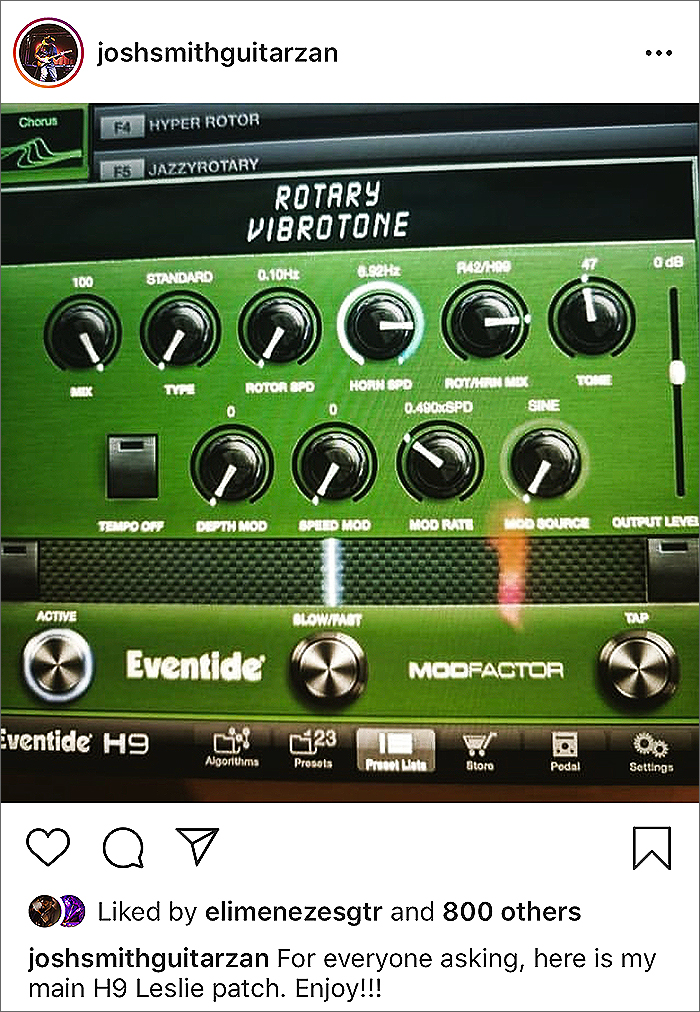
Settings :
- Mix = 100
- Type = Standard (Min)
- Rotor Speed = 0.10 Hz (Min)
- Horn Speed = 6.92 Hz (3 o'c)
- Rotor/Horn Mix = R42/H99 (3 o'c)
- Tone = 47 (11:30 o'c)
- Tempo = Off
- Depth Mod = 0
- Speed Mod = 0
- Mod Rate = 0.490xSPD (10 o'c)
- Mod Source = Sine (Min)
- Output Level = 0dB
Morningstar ML5 5-Loop Midi Controlled Switcher - $199
And this is the other side of the Morningstar MC6 Midi Controller - where you actually plug in and arrange your 5 loops. This allows you to have a more compact controller at the front of your board - for more elegant and flexible accommodation. Most Switcher/Loopers combine the loops and controls in the same unit - which obviously takes up a lot more space. I've mentioned before about the Selah Quartz and TheGigRigh G2, I should also really mention the Boss ES-5 and ES-8 Multi-Effects Switchers, and OneControl Crocodile Tail Loop OC10 which further fill out the gaps in the looper/switcher selection - so in ascending order of size / looper - Selah Quartz, Morningstar MC6 + ML5, Boss ES-5, Boss ES-8, OneControl Crocodile Tail Loop OC10 and TheGigRig G2 - those would be my recommendations!
Sinasoid Cables - Various
Josh Smith uses Sinasoid cables throughout - both guitar cable and patch cables - definitely fantastic quality. My own favourites are the EBS Premium Gold Flats, which I supplement with Rockboard Gold Flat Patch Cables for longer lengths - as the EBS's come in limited lengths. I also rate the Evidence Audio Monorail Solderless patch cables and the KMMK Squareplug range of jacks - largely used in conjunction with the also excellent Van Damme Cables.
Schmidt Array SA250 Pedalboard - €362
Of course Josh chooses to encase his pedals in the Rolls-Royce of Pedalboards - Martyn Smith's Schmidt Array SA250 - the most compact of that type. My own 40-ish-strong pedal-chain rig doesn't really suit pedalboards in its current ever-changing configuration, but were I ever to go down the road of pedalboards, then Schmidt Array would undoubtedly be my first choice. That Pedal Show use them, Adrian Thorpe and Chris Buck, Josh Smith here of course - seems anyone of quality these days is using Schmidt Array. Another system I really like is Ryan Dyck's Templeboard system - which was famously used for Sweetwater's World Record 'Largest Ever Pedalboard'. That system would possibly suit me better in some ways - for quick change-around etc., but is not as self-contained or quite as detail-oriented as the Schmidt Arrays, but does have an ace up its sleeve in its smart through-hole fixing system.
Final Thoughts
So there is much for me here to learn from and pick up on, and quite a few pedals that have been added to my acquisition/wish-list. I believe I have secured a Myriad Fuzz at a relatively reasonable price, so alongside the H9 - I will have two of Josh's core Tone Components relatively imminently.
Of these others I'm definitely getting in a Lovepedal Tchula and Mythos Argonaut Mini. With the King Tone Soloist needing a little further consideration. I will wait for the Specular Tempus V2 - which should hopefully see light of day early-ish next year. While the Battery Billionaire is a nice-to-have and not any kind of pressing priority.
For my own needs I use a lot more different types of tones here than Josh does, and my tastes are a little broader still. There is no challenging the fact that Josh's core signature tone is stellar. Much of that has to do with his own playing finesse, choice of guitar and amplifier too. And as I mentioned in the past, I'm not looking at exact replication - but rather the ability to capture some of the major flavours in use here.
My own version of the EVH sound for instance is somewhat different to Eddie's own, as is my take on various of my own influences and inspirations. I know some of you are obsessed with total replication - but that's just a pipe dream really - as the artist carries so much of his / her signature sound in their own touch and feel and technique - which is wholly unique to them.
Some people get themselves into knots in trying for absolute authentic replication - but that is never a genuine possibility. Do as I do therefore and use the artist's same core tone components to forge your own preferred version of you artist influencer's sound.
I'm certainly never going to rise to the level of Brian, David, Eddie, Eric, Ian, Jimi, Jimmy or Josh!







